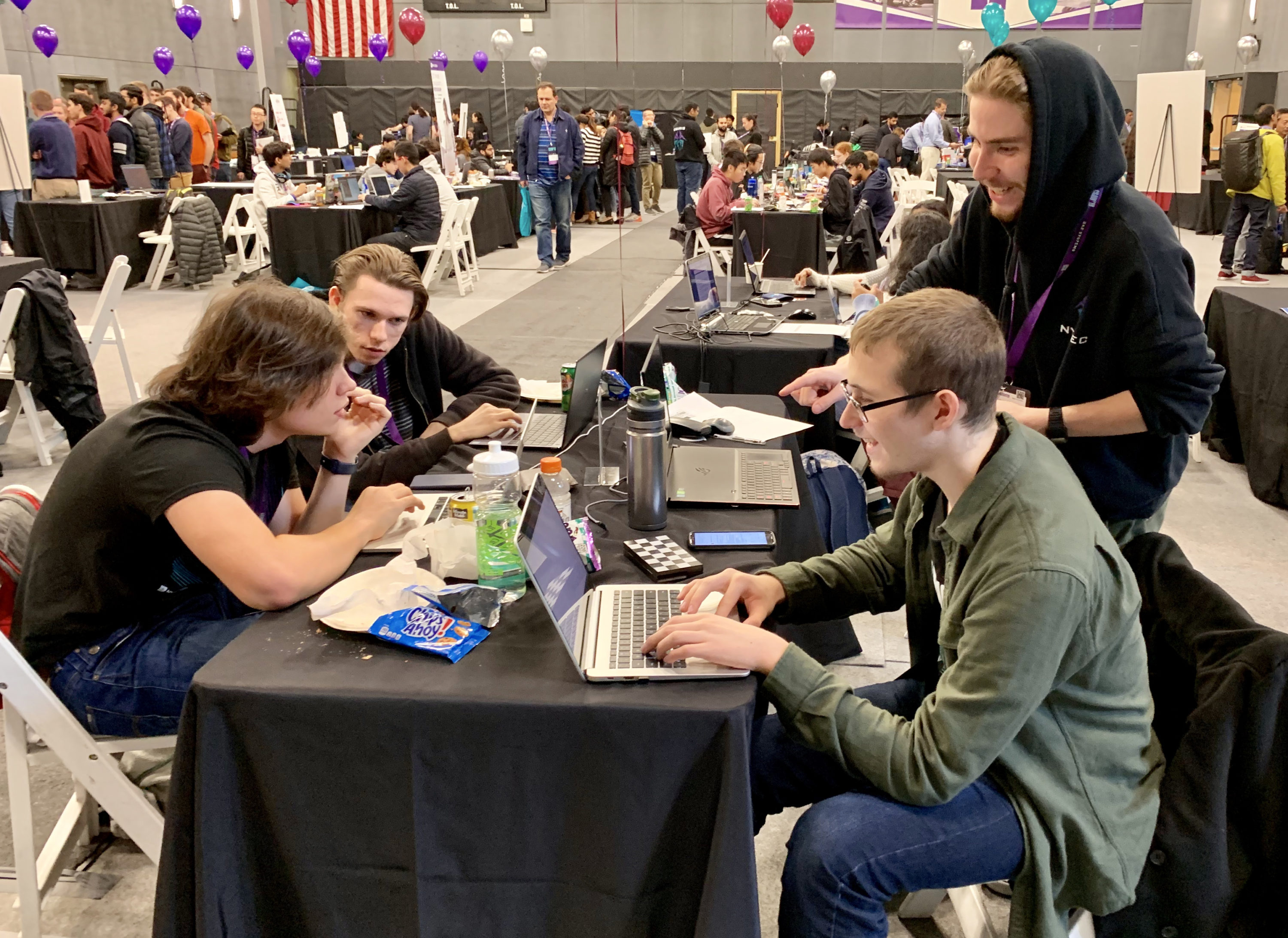The world’s biggest student hacking contest hits 16 years in Brooklyn

High school students competing in the Cyber Security Awareness Week (CSAW) games at NYU Tandon in Downtown Brooklyn. Photo: Mary Frost/Brooklyn Eagle
The winners of the world’s biggest student hacking contest received cash prizes, scholarships and cyber cred, as the results were announced on Tuesday.
The event brought hundreds of students to Downtown Brooklyn’s NYU Tandon School of Engineering last week, where crowds packed the gymnasium for the annual Cyber Security Awareness Week games.
The collegiate competition was won by Perfect Blue, a team comprised of students from four universities. Montgomery Blair High School of Silver Spring, Maryland came in first in the high school category.
